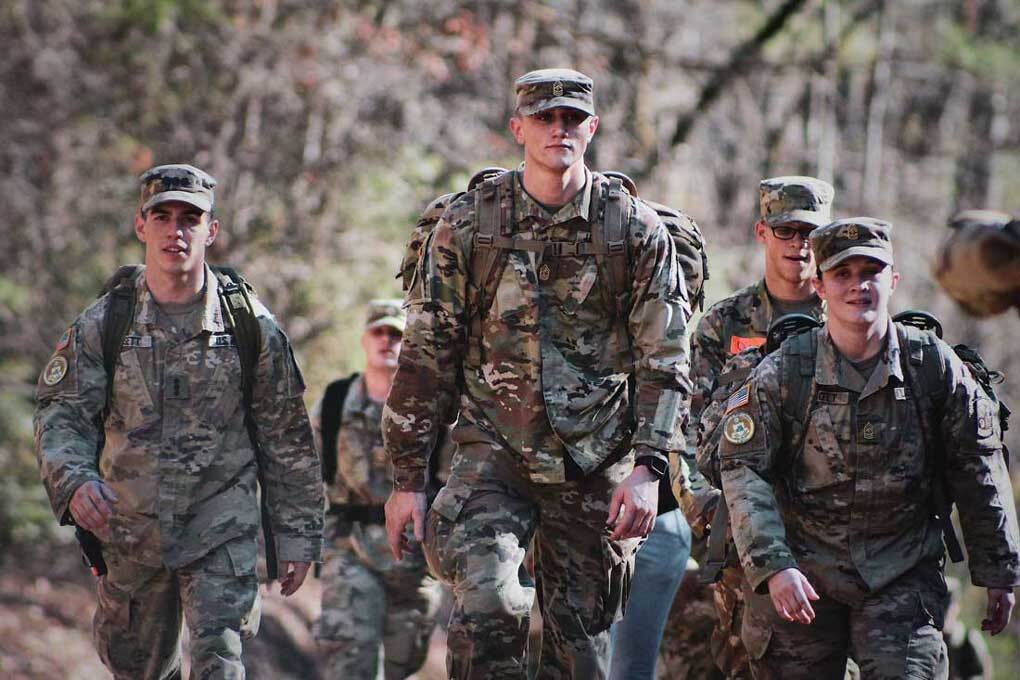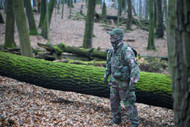How Military Camouflage Gear Was Designed
Posted by Kevin Green on Jan 31st 2023
The concept of camouflage is nothing new. Animals large and small have long used the natural designs and colors of their coats to blend into their environment and hide from predators and prey. Ancient Greeks and Romans camouflaged their fleets by painting their vessels in different shades of blue and green to blend into the horizon on the water. Military camouflage gear came much later. Keep reading for a brief history of camouflage in the military and how it became the leader it is today.
Mud: Nature’s Camouflage
Before camouflage became standard in the military, soldiers all over the world were vulnerable, visible targets because they wore brightly colored uniforms. We’re all familiar with the British wearing their iconic red military uniforms of wars past. Native American raids in colonial America were so successful in part because they utilized nature’s camouflage: mud. Mud had long been used to mask the scent of hunters, and so it was the perfect tool for ambushes as well.
19th Century Military Camouflage
Camouflage continued to evolve in the 19th century, giving birth to what we know now as military khaki. Soldiers in the British Indian Army would dye their white uniforms with creative items like tea and curry powder to remain inconspicuous. The 19th century saw British and European troops begin to adopt uniforms in solid drab colors, with the US close behind. Stealth put militaries at a significant advantage — at least until the developments around the time of the first World War, which is when the more modern history of camouflage began.
WW1 Era Camouflage
Aerial photography, trench warfare, and machine guns arose during WW1, making camouflage more important than ever before. Around 1915, the French deployed camoufleurs — camouflage artists/specialists — to design camouflage patterns. They would paint vehicles, weaponry, and tarps to blend into the landscapes, and would teach other units to do the same. Military camouflage was so useful that it was also adopted by other European armies and the American army the following year of the war.
WW2 Era Tactics
The history of camouflage clothing with the recognizable patterns we know today began during the second World War. Recognizing the effectiveness of camo, many militaries around the world worked tirelessly to develop various disruptive patterns that would adapt to their changing environments.
The US’ experiments with military camouflage created the green and brown “frog” pattern known as Frog Skin. It was used on their uniforms, helmets, shelters, and ponchos. The pattern was mostly a success. Though it was hugely beneficial for the Marines in the Solomon Islands, the pattern was short-lived in Europe due to it mimicking the appearance of the German uniform.
Post-World Wars

Leaf-and-twig camo uniforms were introduced in 1950, but weren’t popular so their use was subsequently dropped. In the 1960s, the US Army first developed the Battle Dress Uniform (BDU) with a four-color pattern, though it wasn’t widely used by soldiers. Instead, soldiers opted for the solid green “boonie suit” or the unofficial tigerstripe and commercial “duck hunter” patterns.
Worldwide, nations researched and developed distinct military camouflage patterns that were designed to match their unique battle landscapes such as the jungle, snow, or desert. The M81 Woodland became the new standard US camouflage in the late 1970s before the new woodland pattern was released in 1981. The pattern consisted of a four-color pattern of black, green, khaki, and brown. This is also around the time that civilians began wearing camouflage as part of their everyday wear.
The six-color “chocolate chip” desert uniform (which included dark brown and gray) became the standard camo of the Gulf War. It was later replaced by the three-color Desert Camouflage Uniform (DCU) that was more subdued.
Modern Day Military Camouflage

By the 2000s, the US had already had a well-established history of camouflage. However, the development of camouflage uniforms continued. More patterns emerged such as MultiCam and Universal Camouflage Pattern, which many of us are quite familiar with. In 2004, the Army officially adopted the three-color Universal Camouflage Pattern (UCP), a computer-generated camo designed to assist soldiers in blending into woodland and desert environments of the Middle East during the Iraq and Afghanistan Wars.
The UCP was replaced in 2012 with the well-received Operational Camouflage Pattern (OCP), which was originally codenamed the Scorpion W2. Similar to MultiCam at first glance, OCP consists of muted green, dark brown, and light beige. This military camouflage is still currently in use by service members.
Officially used by the military and worn casually by civilians for years, camouflage has a well-established history in the US and across the continents. Each decade has seen new camouflage patterns designed and adopted to meet changing landscapes and environments. As the needs of soldiers adapt and change, so does military camouflage to ensure that uniforms are safe, efficient, and practical for wear. It’s come a long way since the camoufleurs of the early 1900s, and will continue to evolve in the years to come.

